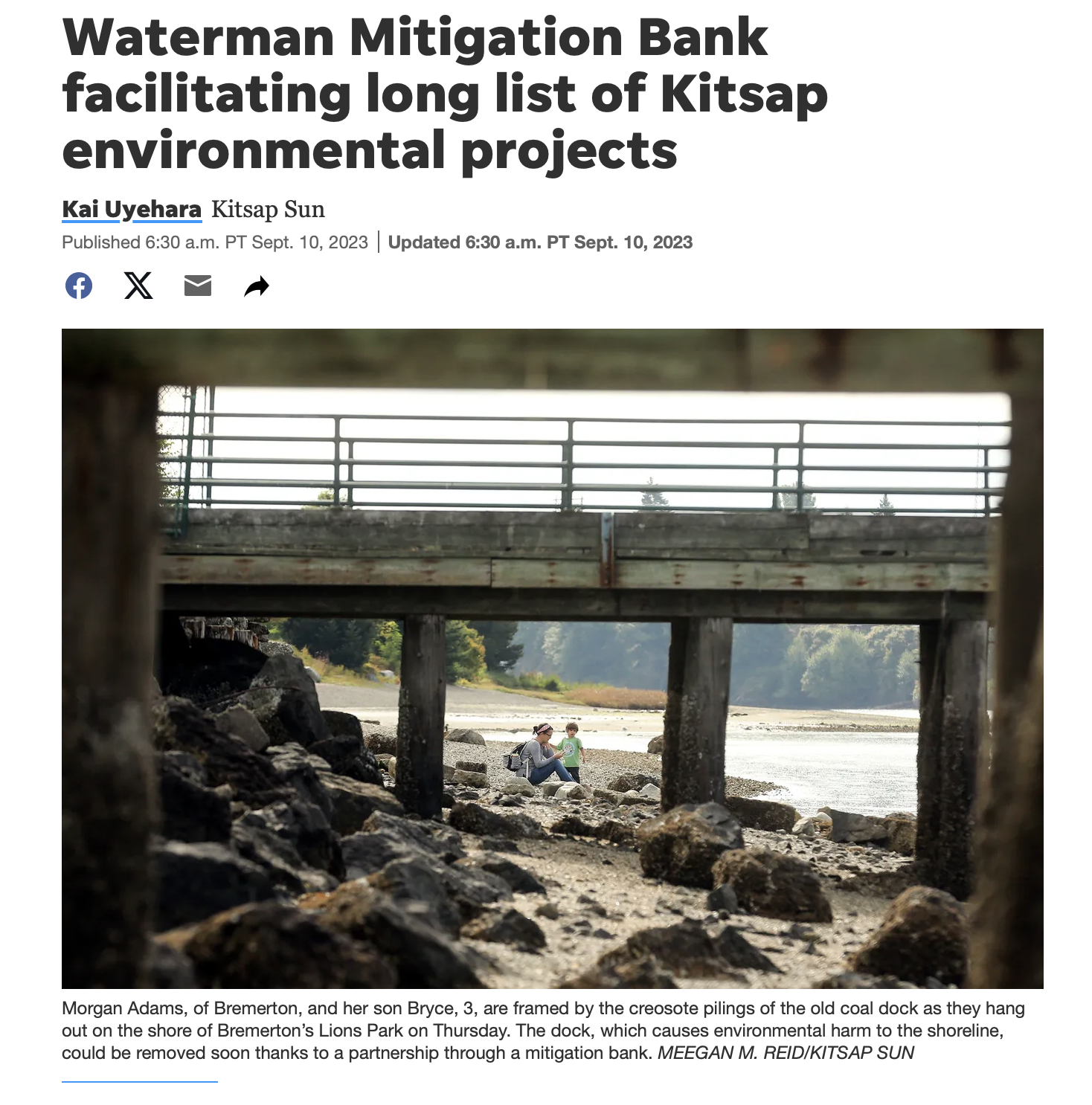KITSAP SUN: Waterman Mitigation Bank facilitating long list of Kitsap environmental projects
below is an excerpt from this article…
For decades barges traveled into the Port Washington Narrows with shiploads of coal, to unload at a dock off Lebo Boulevard and the shoreline that is now part of Lions Park. The large ships would pull up onto slabs of wood called "skids," soaked in creosote and buried into the shoreline, and set against coal docks elevated above the saltwater on pilings also soaked in creosote.
The dock was used through World War II but has been closed for several generations, and the top deck was rebuilt as a fishing pier in 1976. But today, the structure is fenced off from public access, decaying and eroding on the shoreline of one of Bremerton’s most visited parks -- and has been on a city list of sites to clear for years.
It may not remain much longer, thanks to an innovative program known as a "mitigation bank" that can incentivize the work and lower the cost to cities to clean up such sites, now being done locally by a Port Orchard company.
Lions Park’s coal dock is just one of the contaminated sites around Kitsap County that need clearing and restoration, but the cost can be prohibitive for municipalities seeking solutions. Enter the wetland mitigation bank. The local organization, Waterman Mitigation Partners, is working to restore impacted wetland areas and providing private landowners, municipalities, Indigenous tribes and builders an opportunity to buy the bank’s mitigation credits to offset the environmental impacts of other projects.
The creosote pilings at Lions Park are leaching carcinogens into the saltwater where orcas, salmon and other sea-dwelling organisms reside. Hard armoring in the form of concrete blocks are set into the natural shoreline to support and protect the dock.
“Whether it's rainwater or the splash of a wave, it guts the area and it slowly erodes the beach and eventually the asphalt will start to be undermined and it creates not just ecological hazards, but public health and safety hazards and creates liabilities for everybody,” said Dustin Haydock, Waterman Mitigation Partners site assessment specialist. “The natural beach is so much more resilient and it can absorb storms, surges, king tides and rising seas and everything with it.”

